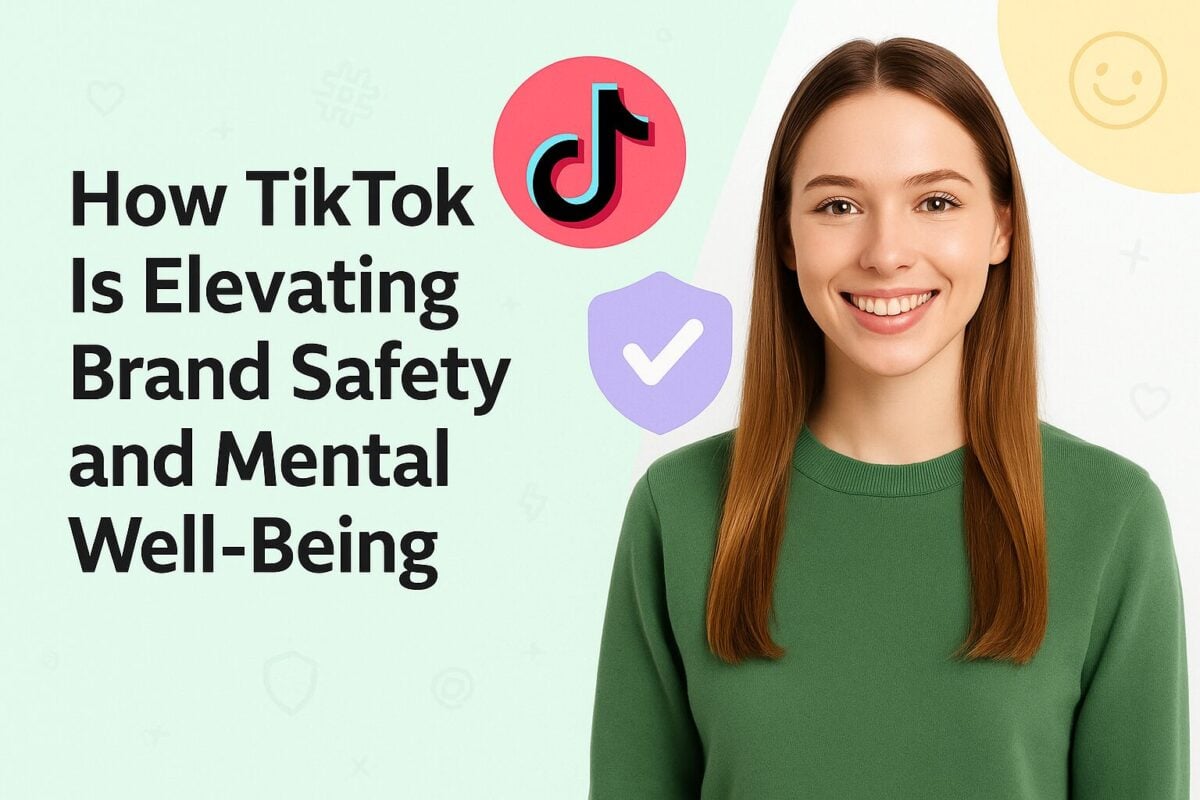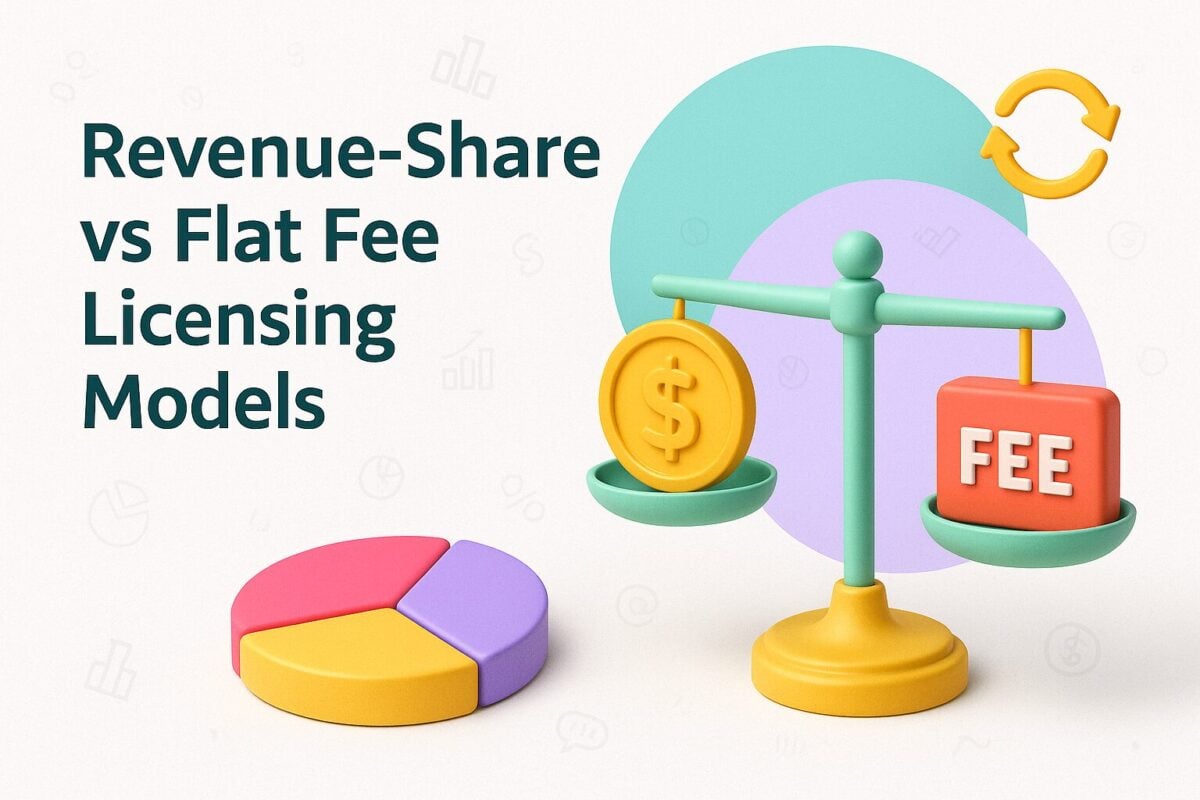In many ways, working with an influencer on Pinterest is very different from marketing on other social media channels. Thus, any brand contemplating influencer marketing for Pinterest will need to change their mindset on how to go about it.
For a start, Pinterest is predominantly visual. Admittedly so are Instagram and Snapchat, but Pinterest looks at things from a different perspective. There are no social feeds, as such. Also, Pinterest is more like a search engine, in many ways, than a social media channel. People search for “boards” depicting images on topics of their choice and then follow those boards they like. Here’s Ben Silbermann, Pinterest’s CEO and co-founder, describing it to investors back in March of 2010:
In some ways, you could compare it to an image repository. Pinterest is referred to as a “visual discovery tool” and they bristle at any mention of it being a social media platform. However, unlike most image repositories Pinterest fully encourages image sharing between peoples’ boards. A Pinterest user sees an image they like on someone else’s board and they “pin” it on their own board.
Look at how Amy Vener, Pinterest’s Retail Vertical Strategy Lead, describes the service:
In this sense, Pinterest works in the opposite way to Instagram and Snapchat. Rather than you sharing your images in a post at a set time with your followers, as you traditionally do on social media, Pinterest encourages you to place (pin) images on your board and wait for people to see them, like them, and repin them on their own boards. Yes, you can notify your followers that you have pinned an image – but the majority of your views will come from search.
One side effect of Pinterest’s visual nature is that many of the pins depict items that a board’s owner has, or wants to have. This means that many of the images depicted are aspirational. People often choose to browse or search for items that they would like to buy. As a result, Pinterest can be particularly important for retailers. A consumer sees something in an image that they would like themselves. Their natural reaction is to try and find that product, and any retailer who makes it easy for them to locate the product is likely to benefit from increased sales.
For this reason, influencer marketing on Pinterest has the potential to be hugely important for B2C products, at least.
Why Influencer Marketing on Pinterest Has Huge Potential for B2C Businesses:
Who Uses Pinterest?
According to DMR’s Pinterest Statistics and Facts, Pinterest now has over 150 million active users. Women make up 85% of these users, which works well for brands as women make the majority of purchasing decisions in the home. It does skew towards younger age groups, with 67% of Pinterest users being Millennials.
Surprisingly, 55% of US online shoppers pick Pinterest as their favorite social media platform, which gives brands a huge opportunity.
Pinterest Puts the “Consume” in “Consumer”
Vener’s new description of the service isn’t just meaningless marketing fluff built around a rebrand: the numbers back up what she’s saying. According to a survey of Pinterest users and their data:
- 60% say they get their ideas for what to buy from Pinterest
- 72% say Pinterest influences them to shop when they weren’t even looking for something to buy
- 90% say Pinterest helps them decide what to purchase
- Pinterest drives more referral traffic to e-commerce sites than Facebook (33% more), Snapchat (71%), and Twitter (200%)
Pinterest Has Built a Platform to Link Brands and Top Influencers
Pinterest was relatively slow off the mark in regards to influencer marketing. This is thought to be because it has its own advertising marketplace, and felt that influencer marketing could cannibalize this. However, in late 2016, it belatedly set up a platform to act as a meeting place for brands and influencers - Pin Collective.
In order to access these creators, businesses have to commit to a minimum media spend (basically: promoted pins and other content). They can then work with these creators to create content specifically for the brand account’s boards. The details of the work, including any payment, are worked out between them—Pinterest doesn’t get involved or take a cut here. Presumably, so long as the minimum spend is met, there’s nothing stopping these brands from also sponsoring pins or boards on the creators’ feeds, as well.
This is a great way to drive traffic to their Pinterest boards, and when other people start pinning these posts, the traffic just increases. Remember, these are people looking for things to buy, even when they hadn’t intended to buy anything.
That said, it currently restricts influencers here to a select group of publishers, production shops, and independent creators. At launch, Pin Collective began with:
- Publishers: Brit + Co, Tastemade, Refinery29 and PureWow
- Production shops: The Mill, McBeard and loop88
- Independent creators: A global group of Pinterest tastemakers like Kyla Herbes (home design), Gary Arndt (travel), Amanda Holstein (advice for Millennials), Peter Lombardi (photography and design) and Sarah Barnes (food)
Although Pin Collective limits the influencers to these selected creators (predominantly, macro-influencers), any brand, big or small, is eligible to use the service.
Pinterest, Now Under the Influence
For smaller businesses and brands that don’t meet Pinterest’s ad spend criteria—and therefore can’t access the Pin Collective—the good news is that they’ve officially opened up their API for influencer marketing platforms. The partners signed on include, AspireIQ (formerly Revfluence), HYPR, Influence.co, IZEA, Klear, Mavrck, Obvious.ly, and Open Influence. For anyone using one of these platforms, the big news here is that you can expand your influencer campaigns onto Pinterest and get access to the full complement of data and insights that was only available to the Collectivists. You’ll be able to pull in these metrics from your own account, too, centralising your reporting.
If your platform isn’t listed here, you can probably give them a nudge to get on board.
Finding Influencers
Brands looking for influencers on Pinterest will need to recognize the different nature of the Pinterest platform. For a start, Pinterest is not a place where you simply search for people who have many followers or even short-term engagement. When an image is pinned to a board on Pinterest, it continues to be visited, looked at, and potentially repinned well into the future, whenever that picture shows up in somebody's search.
This is very different to a tweet (which vanishes very quickly) or even a Facebook post, which will disappear down people's feeds in a relatively short time. It takes 3½ months for the average Pinterest pin to receive half of its traffic (i.e. its half-life). In comparison, the average tweet has a half-life of 24 seconds, and the average Facebook post’s half-life is 90 minutes.
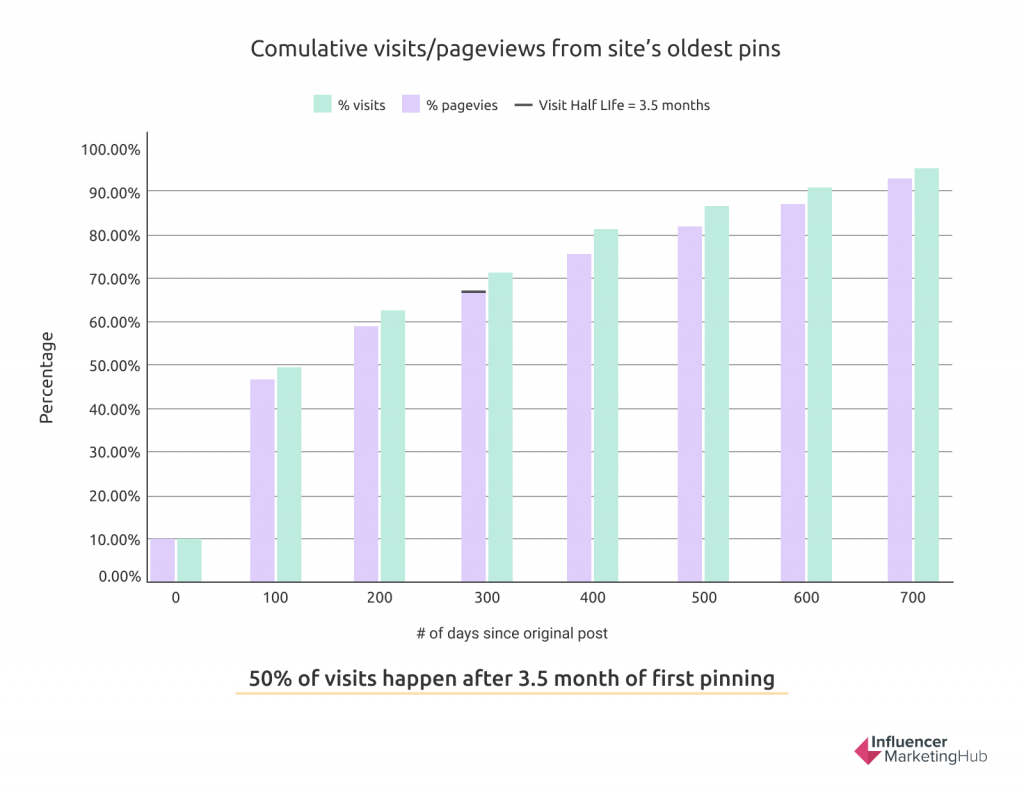
As a result of this, for influencer marketing to be successful on Pinterest a brand should focus on somebody who is skillful at amplifying Pins through the Pinterest search engine, ahead of somebody who simply notifies lots of followers that they have pinned new content.
As with other platforms, Pinterest relies heavily on micro-influencers for its success. For Pinterest, micro-influencers are those pinners who establish a solid reputation for pinning relevant, eye-catching, interesting content to a board about a particular niche. They probably have a comparatively small number of friends (500 - 5,000), but they have managed to establish a strong loyalty with these people. If micro-influencers pin pictures that depict a brand’s products, then people will take notice of what they have pinned.
Unlike Twitter, Facebook and similar platforms, brands also have an important role for macro-influencers. These are often content producers, who may have large followings brought over from where they originate their content. For instance, someone who runs a fashion blog, who in turn pins photos used on their blog, would be an example of a macro-influencer. Their images may be of highly sought products and attract solid support - perhaps as many as 10,000 to 1,000,000 followers. However, these people tend to be less fervent in their support than the followers of micro-influencers.
Macro-influencers tend to have 5-25% engagement rates, compared to micro-influencers who can claim 25-50% engagement.
Tips For Working With Influencers
Influencer Marketing is Less About the Influencer and More About Content
Influencer marketing on most social media channels focuses on people following those whom they recognize as key influencers in a niche. The focus is strongly on the following and outreach of the individual influencer, and the amount of engagement he or she can generate. The actual content that is posted/tweeted/snap-chatted or whatever is less relevant. The general thought is that if an influencer promotes a product, then his or her fans will feel that product must be good.
With Pinterest, it is the content that is paramount. If an influencer creates a high-quality image, with enticing text surrounding it, it could well be found six months later by somebody searching on Pinterest. In this situation, the content has to stand up by itself, not rely on an influencer’s reputation, to interest the searcher.
Optimize Your Images for Pinterest
If a brand opts to create content for an influencer campaign, there are a few ways it can help ensure that people will find the image in a search.
Obviously, there is no point pinning anything that is not a high-quality image. Pinterest is ultimately visual and works best with sparkling clear, enticing images. For instance, if you are a food brand, you want any images you provide to evoke the emotion of hunger.
Vertical images work best on Pinterest, preferably with a 2:3 or 1:3.5 aspect ratio. There are a few situations where you can use taller images, for instance for a foodies board you could use multiple pictures within one image to depict a mouth-watering recipe.
For that particular example, there is a special type of pin that influencers are likely to use, known as a Rich Pin. Rich Pins are pins that include extra information directly on the pin itself. There are six types of Rich Pins: App, Movie, Recipe, Article, Product and Place. For instance, the Recipe Pin allows you to add ingredients, cooking times and serving information to a recipe image.
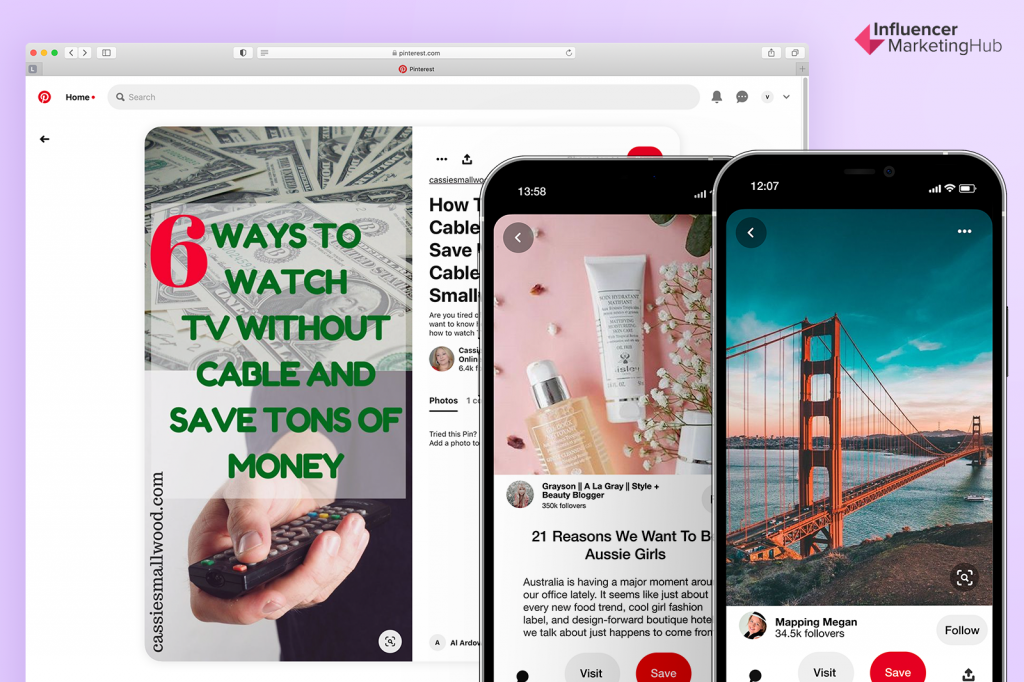
Just like Google, the Pinterest search engine relies heavily on keyword terms. You may not think much about SEO when you write a tweet or a Facebook post, but you should always compose your Pinterest content with SEO in mind. The best influencers will already know this and will ensure that anything they pin is treated appropriately.
Don’t forget that pins are not just images. You do have up to 200 characters available to go with the image on a pin. This text needs to be informative, interesting, and SEO-friendly, too.
Send Products to Influencers and Let Them Create Content
Macro-influencers, in particular, are renowned on Pinterest for the quality of their content. Micro-influencers are renowned for the distribution of their content. In many situations, brands will do well to send free products to influencers and encourage them to create, pin and share that content. These people are the experts at creating content that sticks around, which people will still be encountering in their searches months later.
This presupposes that influencers can see the merit in and like a particular product. If they do, they will most likely produce and share images that make the product look highly desirable.
Target Influencers Who Are Expert Content Curators in a Niche
These tend to be micro-influencers who are highly influential with their followers. Brands can encourage them to source images from across the net, depicting the product positively, pinning them so that their followers can find them. In many ways, Pinterest excels at content curation - this is how most people create their boards.
One good way of doing this is to encourage the influencers to focus on lifestyle images that just happen to include the particular product - in many ways this is not that different from product placement in movies. An image might show a happy family having a barbecue - they just happen to be using a particular branded bottle of tomato sauce on their steaks.
Think Mobile
We are now in an era where there is a huge use of mobile devices to access the internet. This is particularly the case with social media users. 70% of Pinterest activity happens on mobile devices, and a whopping 80% of Pinterest e-commerce sales occur on mobile devices.
It goes without saying that any content a brand provides for an influencer to use needs to be mobile-friendly, and just as importantly, any websites that pins link to need to work well on mobile, too.
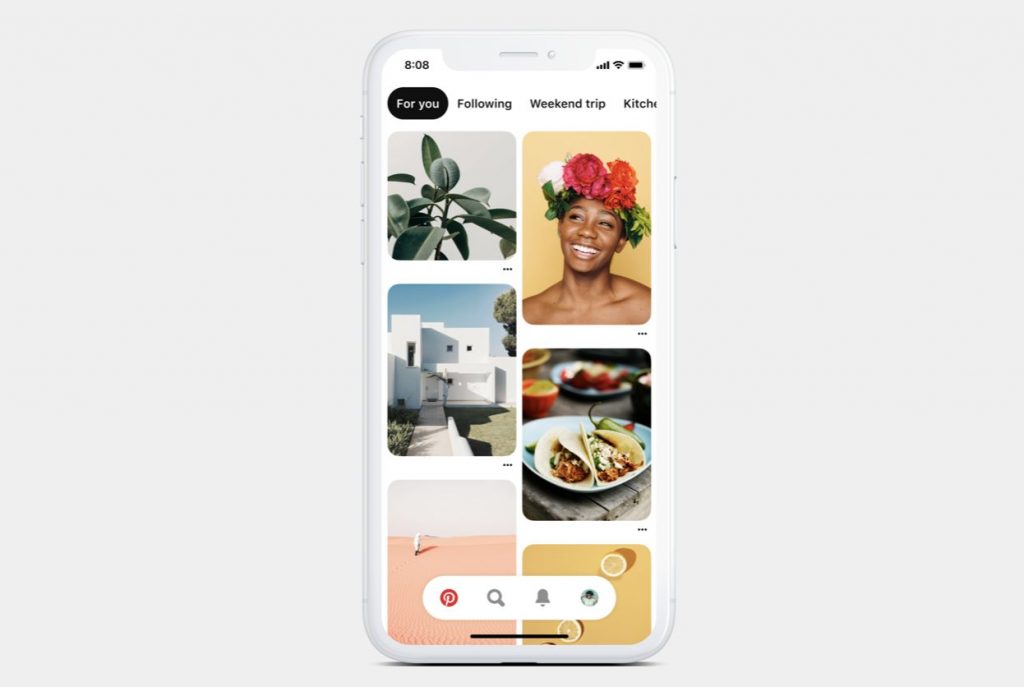
Source: newsroom.pinterest.com
Use Pinterest to Help Spread the News About Your Giveaway Events
Once an influencer pins a post on Pinterest, it is likely to be very widely seen. This makes it ideal for promoting giveaways and competitions. It is highly likely that when people see a pin promoting your event or giveaway, they will in turn also promote your event on their other social media accounts, for example in a Facebook post.
Shopping Ads For the Win
Pinterest has made this feature available to hundreds of businesses on the platform. In keeping with the newfound focus on visual discovery, the shopping ad is meant to replicate the experience of shopping in a store. If you go to a furniture shop looking for a sofa, you’ll quickly scan all your options, moving in for a closer look when something catches your eye. This has as much to do with the way the sofa looks as it does with the display it’s been set up in. Shopping ads give you the same ability to create an appealing “display,” much like you’d find in a store, mixing detailed images of the product with more lifestyle-oriented photos, showing the sofa “in action.”
These images are automatically pulled in from a brand’s product feed and presented to PInterest users as a promoted pin in their search results. The visual appeal of these ads has been shown to be very effective on the Pinterest population (which, it bears repeating—AGAIN—is made up of people who are there with intent to buy things).
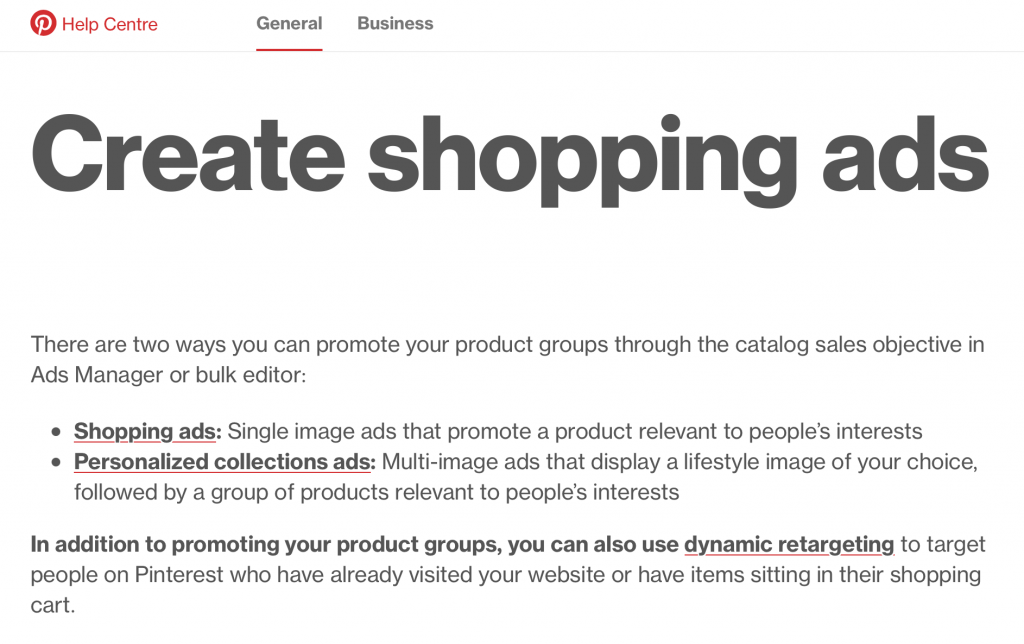
Source: help.pinterest.com
Conclusion
Pinterest is unique among all the popular social platforms. For one, they no longer consider themselves a social platform. The central theme of consumer inspiration is still there, but users are no longer the primary audience. Pinterest has doubled down on their knowledge that people come there looking to buy things but shifting their developmental focus on to attracting and keeping businesses. Where Instagram relies on users to create content and community, attracting businesses to the platform, Pinterest is looking at things from a reverse perspective. They’re trying to make it easier for businesses to develop better content and to get noticed, knowing that the more brands they have to inspire people, the more people will join Pinterest. These latest moves are designed to make it a beneficial platform for more than just the big companies that can afford to advertise with promoted content. Now, smaller companies that have seen the positive effects of influencer marketing can leverage the platform, as well, without huge spending commitments. If you thought the scramble toward influencer marketing was starting to slow down, it looks like you thought wrong. Things are just starting to get pinteresting.

